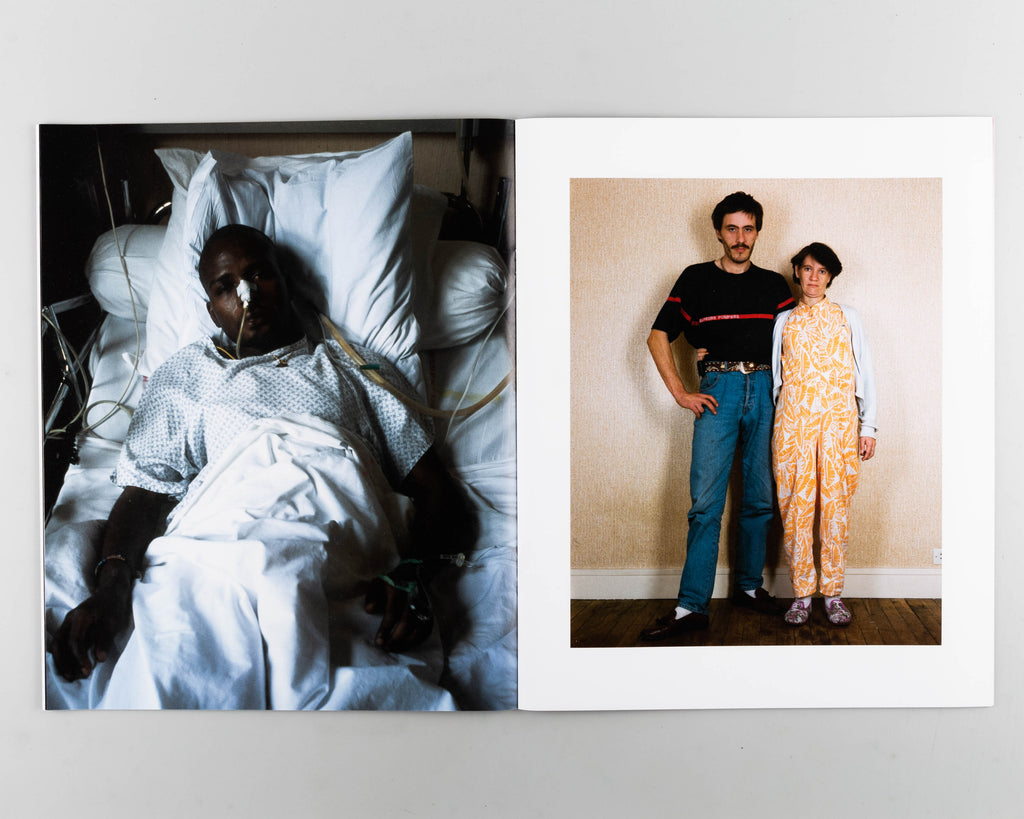Squat
Yan Morvan
£35.00
In the wake of the end of leftism, the gradual end of the 30 glorious years and the resulting increase in unemployment - especially among young people - the question of housing became paramount in the industrialised countries. A youthful proletariat was pushed towards the lumpen and could not find... Read More
In the wake of the end of leftism, the gradual end of the 30 glorious years and the resulting increase in unemployment - especially among young people - the question of housing became paramount in the industrialised countries. A youthful proletariat was pushed towards the lumpen and could not find a solution for housing. Squats opened up, and groups linked to the autonomous movement partially replaced the more or less structured organisations making demands for immigrant workers. Paris, having passed into the hands of the Chirac government, opened the royal way to real estate developers and their fresh cash, razing the working class neighbourhoods all over the west, up to the belt that runs along the ring road. The result is a number of buildings promised for demolition and invested by more or less informal groups, in these porous interstices where the terrible often invites itself. Of all the political movements contesting the established order, if there was one that was deviated to the bone, it would undoubtedly be anarchy. The libertarian movement, like the others, is of course protean and one cannot lump together anarcho-syndicalists, libertarian communists and anarcho-individualists. But it is clear that the most idiotic of them have taken over this word and its symbols generation after generation, making their own failures and drifts into the deep meaning of this ideology. For the past 50 years, anarchy has become the ‘thought’ of those who do not have the means to think. The incarnation of childishness and total adolescent inconsequence. The fatal blow was dealt by Punk as an heir movement. And while some were worthy, such as Crass records, or the British squat movement in the 70s and 80s, where there was still a structure and a semblance of militant training echoed in the Class War newspaper, most were anarchists only with their parents and used provocation in such a way that they were and often remain the best policemen in the world they claim to fight. Anarchy is a business to sell low-fi t-shirts to well-born losers who will return to the class fold without ever having left it, and who will turn this period of their lives into a source of bravado, explaining in turn to the young that this path - which they never took - is a false one. What can be done with them? Nothing. At least if we keep the idea of the emancipation of man by man in our hearts, and if, despite the disgust that this world inspires in us, we keep the flame, the embers of hope. These images of the Didot Squat, taken in 1994, are as good an illustration as any. The punk movement in its first rise is New York and before 1976; in England, it is immediately a fashion product; in France, it is the prerogative of modern young people who frequent the Palace and return to the golden fold at dawn. It is already 15 years later in these photos and France, avant-garde for its elites and eternally backward for the rest, is in the middle of the Alternative wave. It is appropriate here to define this movement. For it is common to hear this word confused with the underground, with which it has nothing in common. When one is part of a process of effective construction within a framework that it contests and intends to destroy with its entrails, the other is just a proposal to consume differently, draped in the stolen clothes of sincerity. Look at them, these funereal clowns, as macabre scarecrows, repulsors of healthy people. It’s all there: drug addiction, fascination with weapons, claimed alcoholism... what happened to the losers who fell into their clutches? From this generation, we will fondly remember the desperate gesture of Florence Rey and Audry Maupin, who belong to the same milieu but describe its impasse. These squats are the epicentres of the deal. What is shared there is often the worst. Moreover, one inhabitant, and not the least, is missing. During the two months that these photos were taken, as part of a commission for Paris Match on the theme of candidate Chirac’s presidential campaign, «the social divide», the man known as Jo (whom the press then called the East Parisian killer) refused to be photographed, and for good reason. He was involved in all the wrong things. His birth name? Guy Georges.




